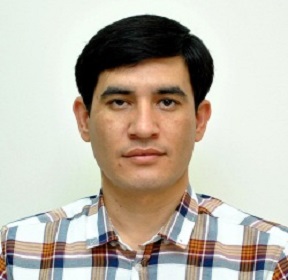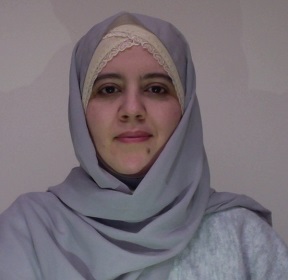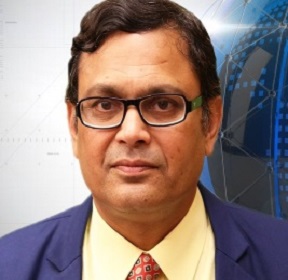Keynote Forum

Vivek S Narayan Pillai
Pariyaram Medical College IndiaTitle: Biventricular function in patients on chronic ventricular pacing.
Abstract:
Aim and objectives- There is indirect evidence from a large number of pacing mode selection trials and observational studies , that conventional right ventricular apical pacing may have detrimental effects on cardiac structure and left ventricular function, which are associated with the development of heart failure. There are limited studies with respect to right ventricular systolic and diastolic function in permanently paced patients. Hence it was proposed to study both LV and RV systolic and diastolic function in a population of permanently paced patients ,using standard echocardiographic techniques.
Methods- This study was a cross sectional study, with a sample size of 81 patients, who had undergone implantation of VVI pacemaker for at least a duration of 1 year.The control group comprised of patients who had pacemaker implanted in the atrial pacing mode,as well as patients with no structural heart disease and normal biventricular function selected from patients undergoing echo evaluation for screening before chemotherapy or surgery or for chest pain evaluation.Both groups were evaluated with standard echocardiographic parameters to assess both LV and RV systolic and diastolic function.
Results- LVEF(assessed by Simpson’s method)-was higher in the control group ( 70.6±4.2%) as compared to the paced group( 63.7±8.8%),but not of statistical significance (P =2.66) .LVPEP-The values in the paced patients were higher ( 104±16.67msecs) compared to the controls(87.8±3.3msecs), but not statistically significant(P=3.75). LVET- showed an increase in the paced group as compared to the control group(267.94±45.10) vs (284.49±40.03),the p value was significant(p=.02). LVPEP/LVET was increased in paced patients .The P value here was not significant (p=1.02.) LVIVRT-paced patients exhibited a higher value(107±19.47 msecs),than the control group(84.44±12.45 msecs), but was statistically insignificant. Mitral E/A-was decreased in the paced group(.9±.76) as compared to the controls(1.15±.40),this finding achieved statistical significance(p value=.02). Mitral E deceleration time-was prolonged (222.96±48.1msec) in the paced group compared to the controls( 203±49.2msec),this finding was statistically significant (p value=.01). Mitral E/E’ was increased in the paced group(9.23±3.08) vs controls(4.74±1.02),without statistical significance( p=2.45).
With regard to right ventricular systolic function, RVFAC(RV fractional area change ) was lower in the paced group( 46.56±9.17) compared to the control group(49.39±5.67), and this finding was statistically significant( p=.019). RVEF( Right ventricular ejection fraction)- was lower in the controls (43.09±3.31%) compared to the paced group, however this finding was statistically insignificant.(p=3.8). TAPSE( tricuspid annular plane systolic excursion)was increased in the paced group compared to the control group(22.96±4.4) vs 18.5±3.22mm) with no statistical significance(p=1.28). RVIVRT- right ventricular isovolumic relaxation time was increased in the paced group( 22.96±4.4) , compared to the control group(84.2±9.9)without attaining statistical significance( p=1.28). TRICUSPID PEAK E VELOCITY- was higher in the paced group( 62.45±14.64cm/s) compared to the control group(55.9±9.9cm/sec)achieving statistical significance (p=.001). TRICUSPID PEAK A VELOCITY - was greater in the control group(48.16±17.26 cm/sec vs 44.56±27.43cm/sec in the paced group), and was statistically insignificant. TRICUSPID E/A –was higher in the control group( 1.14±.380 vs paced group(.90±.5)and was statistically significant(p=.003). TRICUSPID E/A –was higher in the control group( 1.14±.380 vs paced group(.90±.5) and statistically significant(p=.003). TRICUSPID E/E’- was higher in the paced group( 5.45±2.15) compared to the controls ( 4.46±.848) and was statistically significant( p value of = .0001). Eccentricity index- was increased in the control group( 1.11±.07) compared to the paced group( 1.10±.08) without achieving statistical significance ( p=.46). SVC S/D FLOW- the ratio of systolic to diastolic flow in the SVC was increased in the paced group( 1.17±.34) compared to the control group( 1.06±.13), with statistical significance(p=.009).
Conclusions-Our study was more successful in detecting Doppler derived abnormalities of the right and left ventricle , rather than validation of already known facts( such as diminution of LV ejection fraction ) with long term pacing. A paced heart has changes in both RV and LV systolic and diastolic function. Changes in systolic and diastolic function do not seem to incapacitate the patients ,given our findings on functional status of the patients at echo evaluation. RV function in a paced patient needs to be probed in greater detail, given the Doppler abnormalities our study uncovered, dyysnchrony assessment should therefore be directed to the right ventricle too.
Biography:
Vivek S Narayan Pillai is assistant professor at Pariyaram Medical College, India

Veysel zgr Bar
Ankara University TurkeyTitle: Comparison of two different types of stent platforms with biolimus eluting : 3-year Randomized, Prospective, Single center, Clinical and Angiographic trial
Abstract:
Aim: Biolimus eluting stents (BES) are the most popular stent technologies with biodegradable polymer in interventional cardiology. Many studies showed that restenosis rates were lower in BES than in other drug-eluting stents. Many different forms of BES are commercial now, but there isn’t any clinical trial that comparison of these platforms. This study is the first study that compares biolimus eluting stents with rigid metallic and flexible metallic platforms.
Methods: This trial is randomized, open-label, prospective, uncentered in Ankara Turkey. 481 patients presenting with stable coronary disease or acute coronary syndromes undergoing BES implantation in de novo native-vessel coronary lesions were randomly assigned to treatment with flex metallic stent platform BES (BES flex; n =120) or right metallic stent platform BES (BES right n:361) and underwent clinical follow-up or angiographically control to 3 years (Figure 1). The primary endpoint was death from any cause. The secondary endpoints were death from a cardiovascular cause, myocardial infarction, target lesion revascularization, and definite in-stent restenosis.
Results: All of 481 randomized patients were analysed (Table 1). The primary end-point, death from all causes, was similar in both groups (BES-flex: 2.2% vs BES-rigid 2%; p: 0.74). The secondary endpoints, cardiac death (BSS-flex: 1.7% vs BSS-rigid 1.7%; p: 0.99), myocardial infarction (BSS-flex: 6% vs BSS-rigid 7%; p: 0 , 52), target vessel revascularization (BSS-flex: 15% vs BSS-rigid 16%; p: 0.63) were similar in both groups. Coronary angiography control was performed in 142 patients and angiographic restenosis rate was similar in both groups (BSS-flex 19.4% vs BSS-rigid 21.7%, p = 0.775) (Table 2).
Conclusion: BES rigid stents have the same efficacy and safety compared to BES flex stents, whose efficacy and safety have been proven in large studies. With this result, the use of BES rigid stents can provide the same effectiveness at a lower cost. This study is the first clinical study to compare BES with different metallic stent platforms.
Biography:
Veysel Özgür Barış has completed his cardiology fellowship at the age of 28 from Ankara University and his physiology Ph.D. at the age of 34 years from Hacettepe University. He has published more than 10 papers in reputed journals and has been serving as an editorial board member of repute.
Speakers

Shatlyk Gurdov
Ministry of Health and Medical Industry TurkmenistanTitle: An innovative vay to cool the crystalloid cryoprotective cardioplegic solution during open heart surgery.
Abstract:
A new crystalloid cryoprotective cardioplegic solution was invented in Turkmenistan in 2020, which can withstand cooling down to - 5 - - 7 degrees. This is the first and only solution with a unique property to cool the myocardium to +5 - +3 degrees at a minimum calculated dose of 7.5 ml / kg of patient weight. After clamping the aorta, the effect of the injection of this solution into the coronary arteries occurs in the first 35-40 seconds through bradycardia, after which a stable asystole occurs for more than 70 minutes. If it is necessary to extend the time of myocardial protection to 120 minutes, it is necessary to inject half the calculated dose of this solution.The restoration of the heart rhythm after removing the clamp from the aorta occurs within 3 - 4 minutes independently through bradycardia (junctional rhythm) or through high-wave fibrillation without cardioversion and the introduction of cardiotonics. This solution works due to the cryoprotective effect with conformational flexibility and sufficient refrigeration capacity. Histological examinations after 60 and 120 minutes of myocardial cardioplegia showed edema in 25% and 45% of cardiomyocytes, respectively. After 15-30 minutes of myocardial reperfusion (after removing the clamp from the aorta), the edema of the cardiomyocytes disappears. The method of cooling the crystalloid cryoprotective cardioplegic solution below 0 degrees and its composition are protected by patent No. 819 dated 02/18/2020. It is a simple, convenient, reliable and practical "cryoprocard" solution with an economical 500 ml package.
Biography:
Shatlyk Gurdov have 6 years of experience in the field of perfusion (cardiotechnical).He worked for 2 years in the operas of of Prof. Dr. med. Calin Vicol. He worked on all types of heart surgeries. He has been working with our own cardiac surgeons for the last 4 years. He has had 2 internships at the LMU Clinic in Munich to increase my 1 month work experience

Rihab Bouchareb
Icahn School of Medicine USATitle: The implication of platelets in aortic valve calcification
Abstract:
Calcific aortic valve stenosis (AS) is the most prevalent valvular heart disease and the third most frequent cardiovascular disease after coronary artery disease and hypertension. Natural evolution of AS is characterized by a period of asymptomatic progressive valve calcification, which eventually leads to the development of a severe stenosis and to the onset of symptoms. Both in vivo and in vitro research has revealed that increased platelet activity is involved in the pathogenesis of AS, and can also be used as an indicator of AS severity. TGF-β1 enhances glycosaminoglycan (GAG) elongation, primarily located in the spongiosa layer of aortic valve, which increases lipid retention in the ECM. Lipid retention leads to the oxidation of lipid species which can activate the NF-κB pathway, leading to valve interstitial cells (VIC) osteogenic transition. Simultaneously, ADP released from activated platelets causes increased autotaxin (ATX) expression and release from VICs. ATX associates with platelets and ultimately assists in the conversion of lysophosphatidylcholine (LPC), a product of oxidized lipoproteins (Lp) and activated platelets, to lysophosphatidic acid (LPA). LPA binds to surface receptors on VICs causing signaling that activates the NF-κB pathway, leading to VIC osteogenic transition. Therefore, ADP released by activated platelets leads to LPA formation, enhanced by the availability of lipids retained in the ECM due to released TGF-𝛽𝛽1, which activates the NF-𝜅𝜅B pathway in VICs promoting osteogenic transition and thus mineralization of aortic valve.
Biography:
Rihab Bouchareb has completed her Ph.D. from Strasbourg University, France. She then achieved her postdoc at Heart and Lung Institute in Quebec, Canada. She is now an assistant professor at Mount Sinai, New York, USA. Her research is focused on the crosstalk between obesity and aortic valve calcification. She published over 30 publications published in international journals of high impact factors like European heart journal and Circulation; she attended and presented many presentations at international conferences.
Poster

Danni Fu
Brown University USATitle: A Young Female with Syndrome of Inappropriate Sinus Tachycardia Seeking Preconception Counseling
Abstract:
Background:
Syndrome of inappropriate sinus tachycardia (IST) is defined as resting sinus heart rate (HR) of greater than 100 with a mean 24-hour HR of greater than 90 with no underlying etiology associated with symptoms of palpitations and an EKG with no change in P-wave morphology1,3,4. Historically, it was thought to be a rare disease of young females, although recently it was shown to often happen in middle-aged patients without a gender preference3. Its effects and management during pregnancy is not well understood.
Objective:
We demonstrate a classic case of IST in a young female who is now coming in for preconception counseling.
Case/Result:
22-year-old female was diagnosed with IST after she presented with palpitations and lightheadedness and found to have resting HR in the 160s and EKG that showed sinus tachycardia with consistent P-wave morphology. Work-up including complete blood count, complete metabolic panel, urine pregnancy test, urine toxicology, thyroid function test, am cortisol, plasma metanephrines, 24-hour urine metanephrines, CT pulmonary embolism, and echocardiogram were unremarkable. She was started on diltiazem with improvement. She was doing well for 2 years until she came in for preconception counseling regarding the risks of her disease.
Discussion/Conclusion:
The etiology of IST is not well understood2,4; recent study suggests that some IST patients have anti-β adrenergic receptor (AR) antibodies that stimulate the corresponding membrane receptor to result in an increase of cAMP without desensitization2 leading to prolonged stimulation of sinus node β ARs and persistent sympathetic activity2. IST can present as heart failure in pregnancy refractory to beta-blockers and nondihydropyridine calcium channel blockers5. Although it is not recommended in non-pregnant patients given its risk of complications4, ablation is often the next step for drug-resistant IST5. Ivabradine, an If channel inhibitor, has been shown to have greater efficacy in drug resistant IST1, although its effects in pregnancy is unknown. Prior case studies have shown that ivabradine was effective in treating IST related cardiomyopathy with minimal maternal and fetal side effects5.
Keywords: inappropriate sinus tachycardia, preconception, pregnancy
Biography:
Danni Fu, MD is an internal medicine specialist in Manhasset, NY
E-Poster

Bo Chen
Southwest Medical University ChinaTitle: Mesenchymal stem cell ameliorate renal fibrosis by galectin -3 Akt/ GSK3? / snail signaling pathway in adenine induced nephropathy rat
Abstract:
Background: Tubulointerstitial fibrosis (TIF) is one of the main pathological features of various progressive renal damages and chronic kidney diseases. Mesenchymal stromal cells (MSCs) have been verified with significant improvement in the therapy of fibrosis diseases, but the mechanism is still unclear. We attempted to explore the new mechanism and therapeutic target of MSCs against renal fibrosis based on renal proteomics. Methods: TIF model was induced by adenine gavage. Bone marrow-derived MSCs was injected by tail vein after modeling. Renal function and fibrosis related parameters were assessed by Masson, Sirius red, immunohistochemistry, and western blot. Renal proteomics was analyzed using iTRAQ-based mass spectrometry. Further possible mechanism was explored by transfected galectin-3 gene for knockdown (Gal-3 KD) and overexpression (Gal-3 OE) in HK-2 cells with lentiviral vector. Results: MSCs treatment clearly decreased the expression of α-SMA, collagen type I, II, III, TGF-β1, Kim-1, p-Smad2/3, IL-6, IL-1β, and TNFα compared with model rats, while p38 MAPK increased. Proteomics showed that only 40 proteins exhibited significant differences (30 upregulated, 10 downregulated) compared MSCs group with the model group. Galectin-3 was downregulated significantly in renal tissues and TGF-β1-induced rat tubular epithelial cells and interstitial fibroblasts, consistent with the iTRAQ results. Gal-3 KD notably inhibited the expression of p-Akt, p-GSK3β and snail in TGF-β1-induced HK-2 cells fibrosis. On the contrary, Gal-3 OE obviously increased the expression of p-Akt, p-GSK3β and snail. Conclusion: The mechanism of MSCs anti-renal fibrosis was probably mediated by galectin-3/Akt/GSK3β/Snail signaling pathway. Galectin-3 may be a valuable target for treating renal fibrosis.
Keywords: Adenine, Mesenchymal stem cells, Interstitial fibrosis, Galectin-3, Proteomics
Biography:
Dr. Bo Chen, deputy director of Department of Human Anatomy and Embryology, comes from School of Basic Medical Sciences, Southwest Medical University, Luzhou city, Sichuan Province, China. He has his expertise in stem cells treatment for acute or chronic kidney diseases. He devotes to exploring the new mechanism of renal fibrosis in MSCs against renal fibrosis, and looking for the effective anti-fibrotic targets and drugs.

Ben Borokhovsky
Rowan University, USA USATitle: Enterococcal Prosthetic Valve Infective Endocarditis Presenting as Complete Heart Block with Intramyocardial Abscess Causing Asystolic Cardiac Arrest
Abstract:
The extension of an intracardiac abscess causing complete heart block is a rare complication of infective endocarditis that is associated with a high mortality. Early identification of conduction abnormalities and a low threshold for suspecting infective endocarditis is crucial to provide prompt management to prevent intracardial extension of infection. We report a case of a patient presenting with complete heart block in the setting of profound hyperkalemia, and was then found to have enterococcal prosthetic valve endocarditis, which was complicated by an intracardiac aortic root abscess which led to asystolic cardiac arrest. The development of heart block in endocarditis serves as a marker for poor prognosis and can signify progression of infection. Management therefore requires immediate pacing, antibiotic delivery to lessen infectious burden, and evaluation for consideration of surgical options such as valve replacement. It is therefore recommended for patients with endocarditis complicated by conduction abnormalities or intracardial abscesses to be treated by a multi-disciplinary team consisting of cardiologists, cardiothoracic surgeons, and infectious disease specialists.
Biography:
Ben Borokhovsky is a current internal medicine resident at Lehigh Valley Health Network. He completed his medical education at Cooper Medical School of Rowan University. He completed his undergraduate education at Widener University and graduated Summa Cum Laude with a degree in Biochemistry. Ben did research throughout his entire undergraduate education and has consistently been asked to speak at Widener’s Research Symposium and has given a keynote presentation on his senior thesis, for which he won a first-place award. During his time at Cooper Medical School of Rowan University, Ben’s research led to multiple publications in the fields of internal medicine, cardiology, endocrinology, and biochemistry. He has attended and presented his research at various conferences including the Annual Drosophila Research Conference hosted by the Genetics Society of America and the International Conference on Human Genetics and Genetic Diseases.

Hridya Harimohan
Kerala university IndiaTitle: An Exceptional Manifestation of Snake Bite
Abstract:
Introduction: Snakebites have become a major health concern in India. The American Society of Tropical Medicine and Hygiene said in India 46,000 people are dying every year from snake bites against the official figure of only 2000. Aplastic anemia is a rare hematological disorder where the bone marrow fails to produce blood cells due to a decrease in the bone marrow stem cells. In about more than 60% of cases, the cause of bone marrow failure is not known and is called idiopathic aplastic anemia.
Case Descriptions: 17-year-old previously healthy boy with no comorbidities presented to the emergency department with a history of suspected snake bite on his right big toe. Investigations showed features of severe DIC (abnormal PT, aPTT, decreased platelets and decreased fibrinogen, increased FDP, D dimer) for which he was given several units of blood products (FFP, PRBC, and platelets). He was also given appropriate doses of anti-snake venom. In the intensive care, he developed severe sepsis and multiorgan dysfunction. During the course of the treatment, his sepsis cleared but we noted that he developed severe pancytopenia in spite of several units of blood products like PRBC and platelets and even after the stoppage of suspecting antibiotics. We did a bone marrow aspiration and trephine biopsy. Bone marrow aspiration showed dilute marrow with occasional scattered normoblast, scattered myeloid cells, and absent megakaryocytes The trephine biopsy showed severe aplastic anemia with the marrow cellularity around 10% which was quite surprising. He became clinically better, especially with the bleeding tendencies. His coagulation parameters started returning to normal. He was discharged and asked to come for regular follow-up. After one month, the bone marrow was repeated which showed a remarkable recovery with 50-60% cellularity and normal trilineage hematopoiesis. In the last follow-up, the blood counts were Hb 12.1g/dl, WBC 5800 per cubic mm, ANC 2000, and platelet 2,16,000. Other blood parameters like were normal.
Discussion: This patient has a very rare manifestation of snake bite producing severe aplastic anemia. To our best knowledge, we could not find a similar case reported in the literature. Any mechanisms postulated for aplastic anemia are futile because of the lack of cases in the literature. This patient was lucky to have a reversible Bone Marrow aplasia which is not common in a short period of time without specific treatment whatever the cause. It may be better to keep the patient on a long-term follow-up as many other similar circumstances (like drugs, chemicals, infections, etc) could lead to a suppression of Bone Marrow in this patient again.
Conclusion: It is possible that the postulation behind the variation in the constituents in the venom which account for this phenomenon could be possible for the cause of the pathology in our case. Any unusual constituent which could have suppressed the bone marrow temporally either directly or through immunological mechanisms could be postulated as the cause in our case. What that particular unusual constituent was, remains a mystery.
Biography:
Hridya Harimohan is a medical graduate from the Kerala university of health sciences. She is a USMLE aspirant, actively pursuing research right from her undergraduate days. She has passed Step 1 and is now preparing for step 2 CK. Her aim is to get accustomed to Advanced Medical health practices and to make it accessible to underserved and underprivileged communities.
Keynote Forum

Sundeep Mishra
All India Institute Of Medical Sciences IndiaTitle: Do cardiology interventions increase life-expectancy: Quest for the moon rabbit?
Abstract:
The search for elixir of immortality has yielded mixed results. While some of the interventions like percutaneous coronary interventions and coronary artery bypass grafting have been a huge disappointment at least as far as prolongation of life is concerned, their absolute benefit is meager and that too in very sick patients. Cardiac specific drugs like statins and aspirin have fared slightly better, being useful in patients with manifest coronary artery disease, particularly in sicker populations although even their usefulness in primary prevention is rather low. The only strategies of proven benefit in primary/primordial prevention are pursuing a healthy life-style and its modification when appropriate, like cessation of smoking, weight reduction, increasing physical activity, eating a healthy diet and bringing blood pressure, serum cholesterol, and blood glucose under control.
Biography:
Sundeep Mishra is the Professor of Cardiology at AIIMS, New Delhi. He did his DM in Cardiology from AIIMS and did his Fellowship in Interventional Cardiology from Washington Hospital Center. He has been invited as Guest Editor of Catheterization and Cardiovascular Interventions Journal, and was Guest Editor of Indian Heart Journal. He is National Course Director, American College of Cardiology “National Talent Hunt Examination 2013.”He is the Program Director for TCT India. He is a Member of SCAI Publication Committee. He is a voting Member of SCAI International Committee and India Working Group. He is in the Organizing Board of Asia PCR Sing Live. He has been awarded Young Leader Award by CRT. He was the first person to do Virtual Histology in India and transmitted Live to Singapore Live, 2006 and AICT 2006. He is the Past Chairman of National Intervention Council of India. He was the Course Director of Sri Lanka Interventional Meeting 2013 and in Organizing Committee of PCR, ICI, and TCT-AP. He successful led Indian physicians and conducted sessions in EuroPCR, TCT, AsiaPCR / Sing Live, SOLACI, TCT-Asia Pacific, Gulf PCR / GIM, ENCORE, CCT, Israel Heart Society, Turkish Heart Society Meetings and Italian Heart Society. He was awarded “Young Leader Award” by Cardiovascular Revascularization Therapeutics (CRT), Washington DC and has been awarded Sujoy B Roy “Young Investigator Award” and KL Chopra Award by Cardiological Society of India.
Speakers

Pradeepkumar Pillai
United Arab EmiratesTitle: Mechanical circulatory support in Interventional cardiology and in acute cardiogenic shock – A review of current and future trendi
Abstract:
The advent of mechanical circulatory support (MCS) as an offshoot of cardio-pulmonary bypass, opened up new vistas for providing circulatory support for high risk Interventional cardiological procedures. A very high degree of safety in patient care can be achieved in incorporating mechanical circulatory support for high risk patients undergoing complex interventional cardiological procedures like high risk Percutaneous Coronary Interventions, Trans-catheter Aortic Valve Implantation (TAVI/TAVR) procedures.
Another aspect of MCS is its potential for salvaging and stabilizing failing circulatory dynamics in patients undergoing acute cardiogenic shock. Advances in extra-corporeal circulation techniques and equipment alongwith revised protocols of patient care have resulted in improved patient outcomes in this critical patient category.
The presentation reviews current devices and MCS therapy regimen in use and tries to predict future trends with a view to make the procedure more effective in delivering favourable outcomes.
Biography:
Pradeepkumar Pillai is a Senior Clinical Perfusionist , currently working in the Department of Cardiothoracic Surgery, Dubai Hospital, Dubai, United Arab Emirates. He is also the current Editor-in Chief, Indian Journal Of Extra-Corporeal Technology, the official journal of the Indian Society of Extra-Corporeal Technology (ISECT). He completed his Post-Graduation in Microbiology from the University of Mumbai, India in 1999 and subsequently his cardiovascular perfusion training from Amrita Institute of Medical Sciences and Research Centre, Kochi, Kerala, India in 2001. He has about 19 years of professional experience in clinical perfusion. Among his principal interests include- Mechanical Circulatory Support, Non cardiac application of Extra-Corporeal Circulation, Pediatric and Neonatal Cardio-Pulmonary Bypass, research in life sciences ,etc

Samrat Sukumar Madanaik
Krishna Institute of Medical Sciences Deemed University IndiaTitle: Anesthesia for myocardial revascularization
Abstract:
Coronary artery disease is a major cause of mortality in our country. Due to increase in awareness and availability of medical help a greater number of patients are diagnosed with coronary artery disease. Anaesthesia care for patients undergoing coronary artery bypass grafting (CABG) continues to be a challenging but is also very rewarding feat. Recent advances continue to drive changes in clinical routines at a very fast pace although the number of cases has declined due to percutaneous coronary interventions. Cardiac anaesthesiologists need to be constantly updated regarding the current trends in practice especially with the advent of transoesophageal echocardiography and hybrid procedures. Fast track anaesthesia is being practiced at many centres which is known to reduce the overall morbidity and mortality in cardiac surgical patients. In this session we will look at the current trends in anaesthesia for myocardial revascularization.
Biography:
Samrat Sukumar Madanaik (MD, DM, FICCC, FIECHO, FIECMO) is a consultant cardiac anesthesiologist practicing at KIMSDU, Karad. After completing his MD in anesthesia, he pursued DM in cardiac anesthesiology. His interests include transesophageal echocardiography, lung ultrasound, heart transplantation, and ECMO. He is the recipient of the best academic achievement award 2017. He has many research publications to his name and serves as an editorial board of repute.
Poster

Gonzlez R Nelsy
Los Andes University MexicoTitle: REFERENCE VALUES OF MYOCARDIAL T1, T2 AND T2* RELAXATION TIMES, 1.5 T, IN HEALTHY LATIN AMERICAN PATIENTS
Abstract:
The Cardiac magnetic resonance (CMR) is an invaluable tool for diagnosis and risk stratification in a wide spectrum of heart diseases. To determine the reference values of myocardial T1 relaxation times, T2 and T2*, in our population to justify their clinical interpretation in the tissue evaluation of different cardiovascular diseases. We included, 27 healthy volunteers (13 men and 14 women) between 25 and 69 years of age. A short CMR protocol was performed in a 1.5 T resonator, using the MOLLI technique, in T1 mapping. The global and segmental T1 values were quantified, using the American Heart Association (AHA) model, for the entire left ventricle, in three short-axis slices (basal, middle, and apical). The post process and analysis of the data with the commercialized software, Cvi42. The mean global myocardial T1 value was 1069.41 ms with a SD of 38.73 ms. Among the age groups, the group <34 years had the lowest global T1 values (1057 SD 33 msec), and the group of 35 -44 years obtained the highest values (1100 SD 50 msec), so no relationship was found between the linear increase in age and the variability of relaxation times. Between both sexes, men had lower global T1 values than women (1049 vs 1086). Regarding the value of T2, our average was 51.58 msec. Finally, T2*: 36.61 msec. The native T1 ranges can serve as a basis for the quantitative characterization of the myocardium in the context of focal or diffuse diseases, in patients with infarcts, storage and inflammatory diseases. Therefore, we consider that we have presented the only database of myocardial T1 relaxation times carried out in a healthy Latin American population, and it is a fundamental need for its subsequent comparison with studies in populations with similar characteristics.
Biography:
González Nelsy Coromoto has completed his PhD at the age of 24 years from Los Andes University and postdoctoral studies from Universidad Nacional Experimental de México. She is the director of cardiovascular imaging of CT Scanner México. She has published more than 30 papers in reputed journals and has been serving as an editorial board member of repute.

Danni Fu
Brown University USATitle: A Novel Thrombolytic Protocol for Mechanical Aortic Valve Thrombosis
Abstract:
Introduction:
Subtherapeutic anticoagulation (AC) of mechanical aortic valves (MAV) can lead to thrombosis causing obstruction. Hyperdynamic left ventricular (LV) systolic function, elevated LV outflow tract velocity, and aortic insufficiency (AI) can be seen on echocardiogram (TTE) due to changes in transvalvular gradient. Thrombolytics (tPA) are used in high-risk candidates while surgery is done in low/moderate risk candidates and those with large clots. Our case shows a high-risk candidate treated with a novel tPA protocol that resulted in the resolution of aortic valve obstruction.
Case Description:
54 yo female with MAV underwent abdominal surgery where AC was held now presenting with cardiogenic shock. TTE showed new severe aortic stenosis (AS) due to leaflet restriction from a large thrombus along with new AI, which precluded mechanical circulatory support. She was a poor surgical candidate and was given 50mg of alteplase at a rate of 8.3 mg/dl along with low intensity IV heparin. After 2 hours, TTE showed resolution of AI and significant improvement of AS. Unfortunately she experienced cardiac arrest due to other reasons and failed to respond to multiple rounds of resuscitation. Hemoglobin checked during the code blue was stable, ruling out hemorrhage as the cause of death.
Discussion:
tPA infusion for AV thrombosis is generally recommended at an ultraslow rate of 25mg over 25 hours followed by IV heparin 6 hours post infusion. Given the instability of our patient, we administered 50mg of tPA over 6 hours, simultaneously with heparin, which led to the resolution of AI and improved transvalvular gradients. Observational studies indicate lower complication rates with the ultraslow protocol, but it can fail in those with severe symptoms or larger thrombus burden. Our case demonstrates a new protocol that can be considered in patients with hemodynamically unstable AV thrombosis.
Keywords: Aortic valve thrombosis, mechanical valve, thrombolysis
Biography:
Danni Fu, MD is an internal medicine specialist in Manhasset, NY

